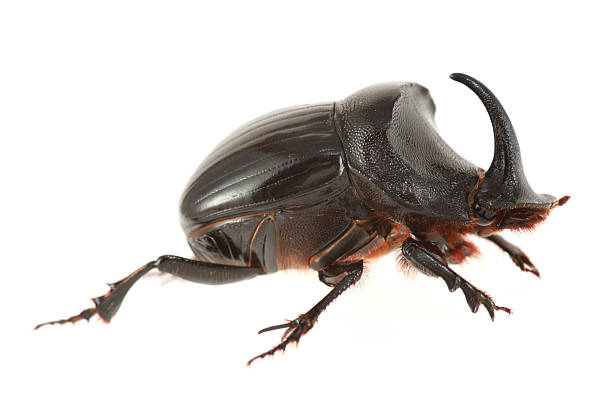Scientists have introduced one of the rarest beetles of central Europe to the former Milovice military training area. The critically endangered horned dung beetle is considered extinct, for example, in the western part of the Czech Republic, and it is found in the eastern part of the country at several last sites near Mikulov close to the border with Austria.

“The horned dung beetle is a coprophagous beetle and its larvae and adults feed on dung. Historically it was found in the territory of the Czech Republic on pastures and in game parks of warm lowlands as well as in military areas,” explained Lucie Ambrozova from the Institute of Entomology of the Biology Centre of the Czech Academy of Sciences.
In 2018 the Institute of Entomology was given permission for laboratory breeding of the horned dung beetle for elementary research. The species was successfully reproduced, and the scientists released individuals unused for research in the reserve for large herbivores in the former Milovice military training area.
“The conditions for selecting a suitable location included the historic presence of the species, a sufficient area of a suitable biotope, grazing with long-term good prospects and the presence of fairly numerous herds of herbivores without the use of veterinary chemicals,” added Miloslav Jirku from the Biology Centre of the Academy of Sciences.
In April 2020 the scientists released a total of 150 individuals of the horned dung beetle in two waves, 89 females and 61 males, in an area of about 2.3 hectares. The scientists discovered both the beetles and their holes this year as well.
“The beetles found did not bear signs of wear, so we assume that these are individuals from the new generation that was born already in the reserve. For example, they did not have a worn face shield, projections on their front legs or dulled horns in males,” Lucie Ambrozova added.
Nevertheless, it is not by far certain whether the rare beetles will live in the site permanently. The extreme weather of recent years creates extreme conditions for the small group of colonists.
“Based on the experience from New Zealand, it may take five or more years before we are able to assess whether the new population has increased enough to be viable,” emphasised Lucie Ambrozova.
It is specifically the return of animal and plant species that had become extinct in the former military training area years ago that is one of the key parts of the project of grazing of large ungulates.
“Large ungulates restore a varied mosaic in the landscape that is needed by a number of endangered organisms. Moreover, it is not a one-time intervention, but the positive changes are of a long-term nature,” pointed out Dalibor Dostal, director of the European Wildlife conservation organisation.
The important fact for the return of rare dung beetles is mainly that no chemicals that are currently common on pastures for farm animals are used on the pasture.
“Sadly, domestic animals cannot do without antiparasitics, some of which are toxic for dung beetles and other organisms. Wild ungulates in reserves do not need such veterinary drugs. This is not only thanks to the large areas of pastures and a good immunity but also owing to the physical fitness of animals that live in natural conditions.
“Coprophagous, i.e. dung beetles feeding on faeces play an absolutely essential role. It is because along with faeces they also remove infectious stages of parasites from the pastures. It is natural prevention of parasitoses proven by millions of years of evolution,” Miloslav Jirku concluded.
